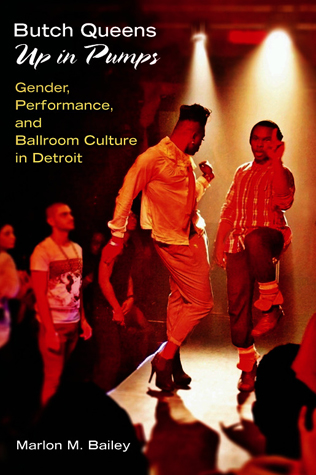
Butch Queens Up in Pumps
Butch Queens Up in Pumps examines Ballroom culture, in which inner-city LGBT individuals dress, dance, and vogue to compete for prizes and trophies. Participants are affiliated with a house, an alternative family structure typically named after haute couture designers and providing support to this diverse community. Marlon M. Bailey’s rich first-person performance ethnography of the Ballroom scene in Detroit examines Ballroom as a queer cultural formation that upsets dominant notions of gender, sexuality, kinship, and community.
“Butch Queens Up in Pumps is a sophisticated account of the production of genders and bodies and it tracks subversion and resistance not to symbolic acts but to material forms of survival and community. . . . This book, showing that gender is equal parts production, performance, biology, labor and fashion, makes truly original contributions to the twenty-first century study of gender and embodiment.”
—Jack Halberstam, University of Southern California
“At once revelatory and heartbreaking, Bailey’s ethnographic details leap off the page, putting the reader dead center inside the kaleidoscopic world that is ballroom. Beyond his wonderful storytelling, however, Bailey’s research is undergirded by the very ‘ethics of care’ practiced by the members of the ball houses he studies, as well as a nuanced theorizing that sacrifices none of the material implications of the political economy of racialized spaces—specifically the ballroom scene in Detroit.”
—Dwight McBride, Northwestern University
“To read Butch Queens Up in Pumps is to immerse oneself in the drama and splendor of Detroit’s Ballroom culture, a thriving Black and Latino performance commons. Marlon Bailey’s riveting accounts of live performance events like Ballroom competitions, his astute analysis of the performer's world off the runways and his invaluable insights on the complex, interlacing performances of race, class, gender and sex that mark the entire scene remind us of what the best performance ethnographies can teach us.” —José Muñoz, New York University